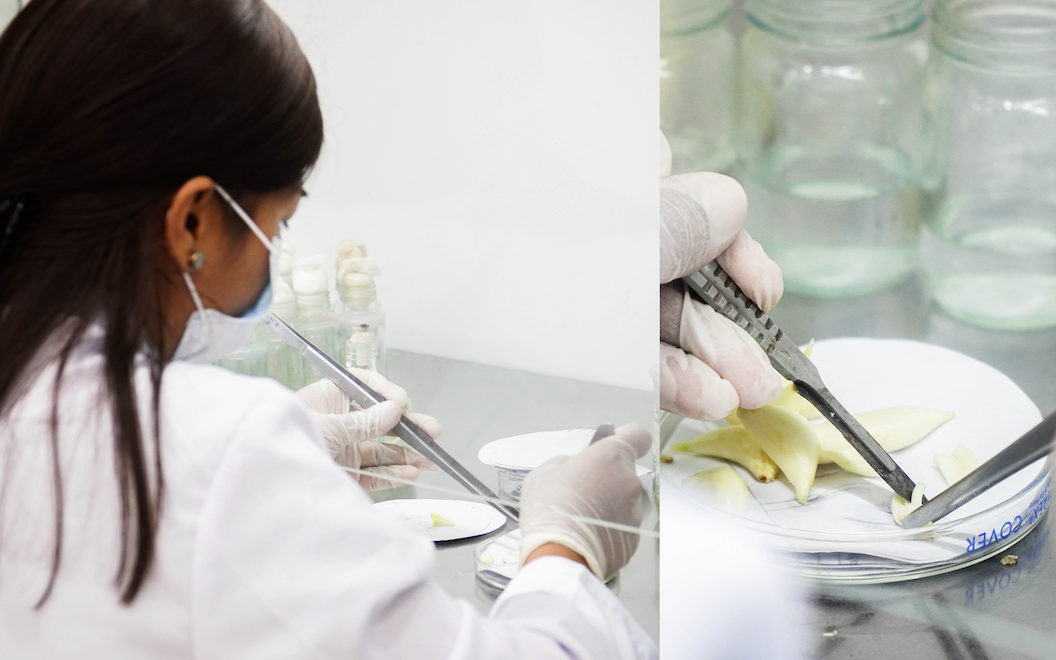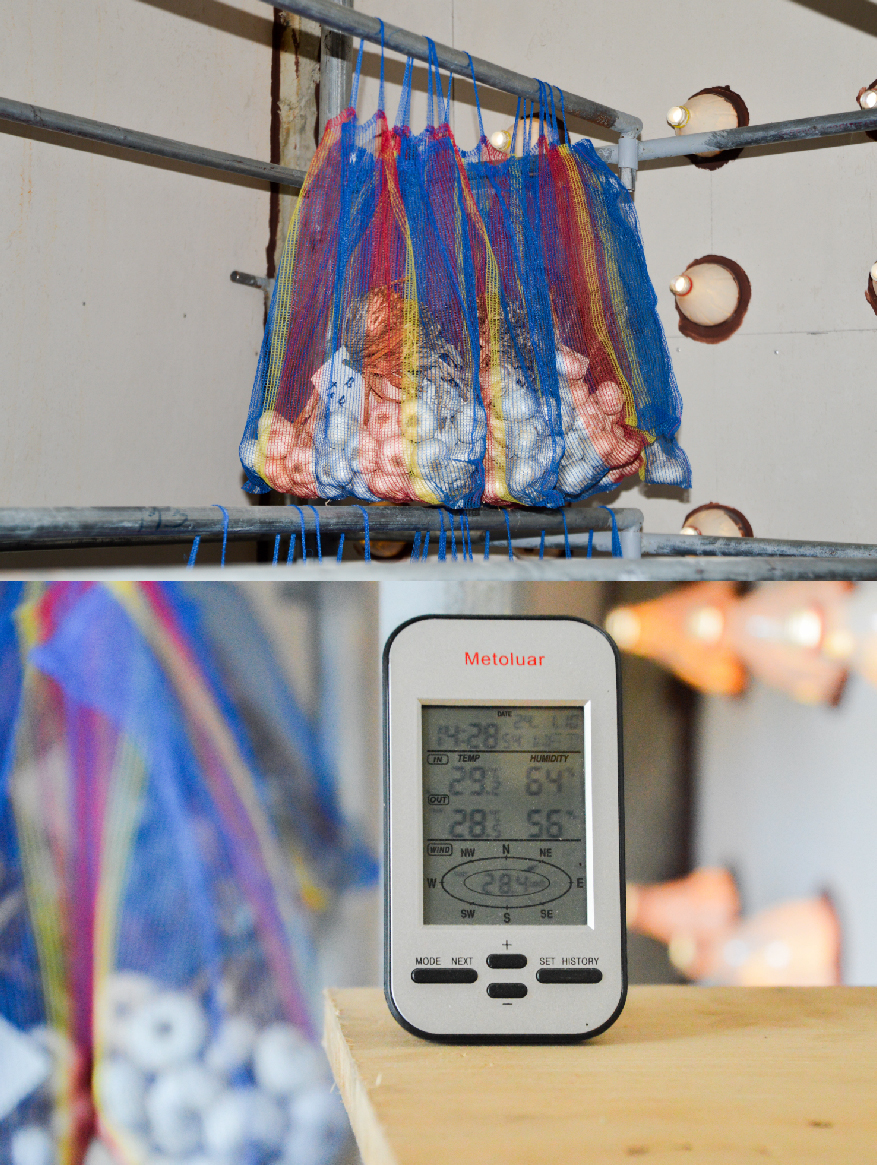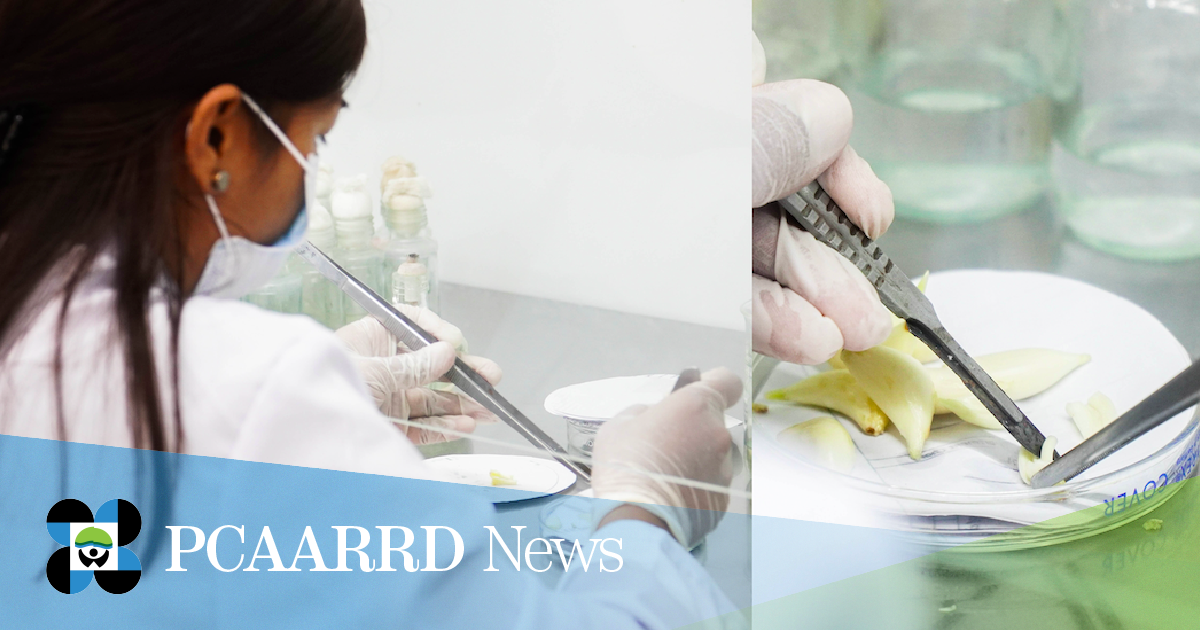
Staff of the Garlic and other AFCs R&D Center prepares explants for garlic tissue culture for their in vitro gene bank. (Image credit: CRD, DOST-PCAARRD)
Addressing the need to enhance the competitiveness of the garlic industry in the country, the Garlic and Other Agri-Food Condiments (AFCs) Research and Development (R&D) Center Program continues to advance strategic science and technology (S&T) solutions, such as the prototype disease forecasting mobile application for garlic, information system for garlic and chili germplasm collection, and low-cost garlic curing and storage structure.
The three-year program, "Accelerated R&D Program for Capacity Building of Research and Development Institutions and Industrial Competitiveness: Niche Centers in the Regions for Research and Development (NICER): Garlic and other Agri-Food Condiments R&D Center,” is being implemented by the Mariano Marcos State University (MMSU) in Batac, Ilocos Norte. It is funded by the Department of Science and Technology (DOST) through the Science for Change Program (S4CP) and monitored by the Philippine Council for Agriculture, Aquatic and Natural Resources Research and Development (PCAARRD) of DOST.
In a program terminal review organized by DOST-PCAARRD’s Crops Research Division (CRD), the Center highlighted its efforts to boost garlic productivity and strengthen garlic farmers and other industry stakeholders.
Program Leader Dionisio S. Bucao reported that the Center’s prototype for the garlic disease forecasting mobile application achieved a 97 percent accuracy rate in identifying garlic insect pests and diseases during simulations. Designed to assist garlic farmers in crop protection and disease management, this development shows promise for the mobile application in serving as a decision support system for farmers in their production practices and pest management.
Field tests for the application are being conducted in garlic farms in Ilocos Norte for further optimization before its launch to the general public.

Inside the curing and storage structure of harvested garlics developed by the program. (Image credit: CRD, DOST-PCAARRD)
Current garlic production and pest control practices of garlic farmers in Regions 1, 2, and 4A are also being documented to aid in formulating ecologically-based pest management strategies. When done effectively, these strategies can help in creating a self-regulating system that keeps pest populations in check, reducing the need for chemical pesticides and other inputs.
The initiative is part of the Center’s efforts to develop a sustainable integrated cultural management (ICM) for garlic production.
A component project aimed at conserving and improving the genetic resources of AFCs in the country also developed an information system for the Center’s garlic and chili collection. The data are currently deployed at MMSU’s local server but the team plans to share it to the general public, not just among researchers.
Moreover, about 3,438 promising garlic mutants, planted at the MMSU genebanks are being evaluated as potential resources for crop improvement.
A low-cost village-level curing and storage structure for garlic was also developed to mitigate postharvest losses that are often caused by moisture loss, shrinking, and insect pest infestations. The structure uses natural convection to regulate the temperature and humidity conducive to garlic storage, minimizing moisture loss and sprouting of roots.
According to the team, storing the 'Ilocos White' garlic variety at 25–30°C with 56–60% relative humidity can preserve it at its optimum quality.
However, the team aims to further optimize the structure to lower its construction cost. They will also facilitate the filing for a utility model (UM) application for the said structure.

DOST-PCAARRD staff members with the MMSU program team led by Dr. Shirley C. Agrupis. (Image credit: CRD, DOST-PCAARRD)
S&T Consultant Leoncia L. Tandang, a retired professor from the Benguet State University (BSU), and Engr. Romeo P. Santiago from the Agricultural Resources Management Research Division (ARMRD) of DOST-PCAARRD, served as technical evaluators for the three component projects of the program.
The review was attended by MMSU President Shirley C. Agrupis and the Garlic and other AFCs R&D Center program team, along with key CRD staff led by Assistant Director Sharie Al-Faiha A. Lubang and Industry Strategic S&T Program Manager for Vegetables Joel Norman R. Panganiban.

